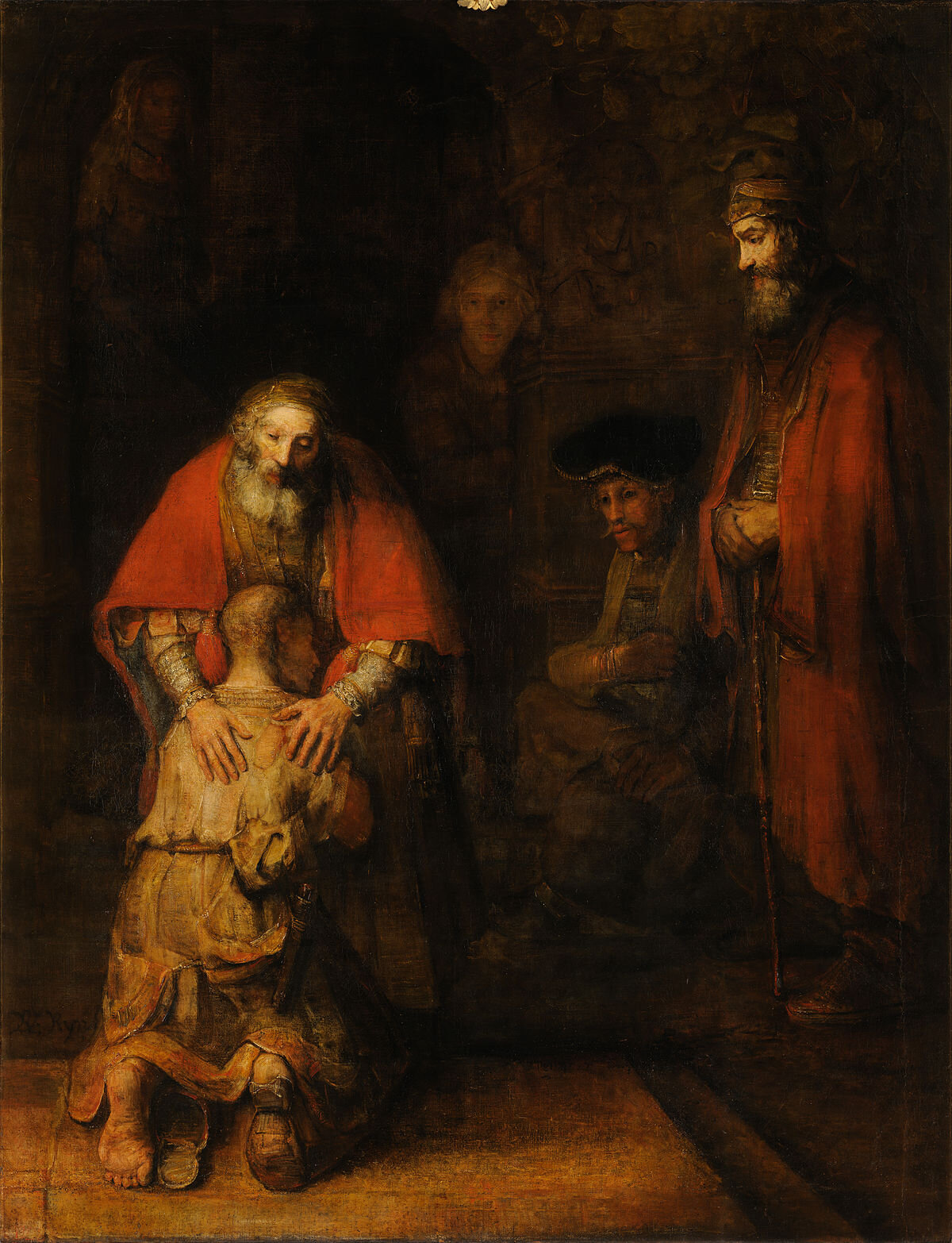Rembrandt’s The Return of the Prodigal Son, c. 1661–1669
The longest of the three parables on God’s mercy in chapter 15 of Luke’s Gospel bears the traditional title of The Prodigal Son, named after the younger son who wasted his inheritance in a foreign land. Since the father is the central figure in the story, the parable has sometimes been re-named after the Prodigal Father, who so lavishly shows his love and mercy to his rebellious younger son.
A little more provocatively, my favorite title is the parable of the two lost sons. This presupposes, of course, that it is possible to be lost “in place.” The elder son is none too pleased to discover a party being thrown for “that son of yours.” Contrasting his own fidelity to the latter’s promiscuous ways, he stews in his own indignation. One is never given to know whether he is persuaded by the father’s pleading, but as it stands, the elder son is actually in more peril than his brother, who learns by hard experience how much he depends on the father’s love and forgiveness. The younger son has the ironic advantage of not having any good deeds to put between himself and his father. On that account, he finds himself in a position to better understand where he really stands vis-à-vis his father.
One often hears a chorus of sympathy for the elder son, much like the cheering section for Martha in that other episode in Luke’s Gospel. But let’s beware of our sympathies. What may look like a “raw deal” according to our standards of judgment is the two edged sword that cuts away at our “all too human” perspectives. It is not by any merit of ours that God turns his face toward us. The sooner we get that into our thick skulls the better. Better for our relations across the board – with our troublesome neighbor, with our prideful selves and with our infinitely loving God.
